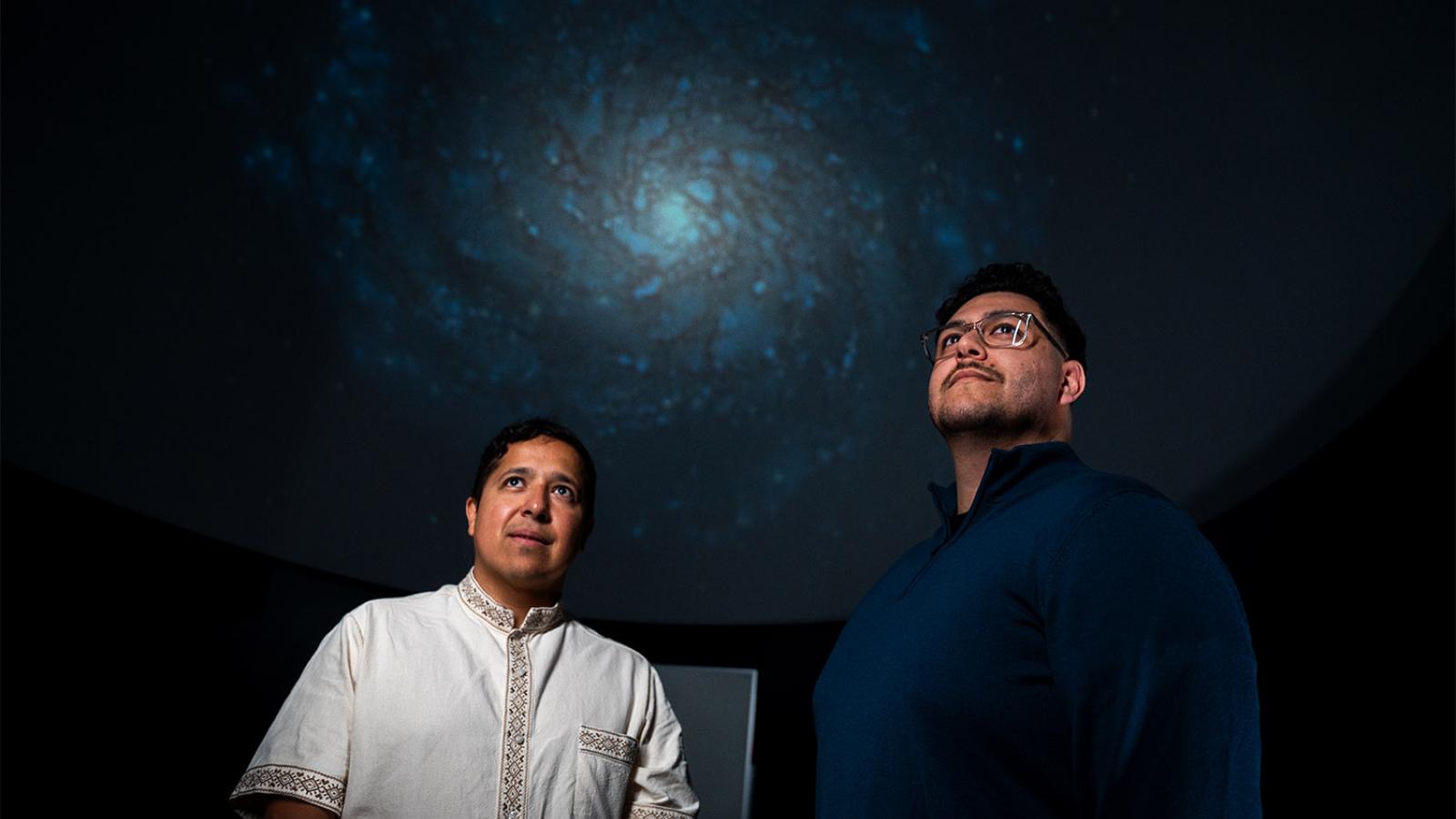A paper titled "Hooks & Bends in the Radial Acceleration Relation: Discriminatory Tests for Dark Matter and MOND" by a team of Pomona College researchers was published April 16 in the Monthly Notices of the Royal Astronomical Society (MNRAS).
Lead author Francisco Mercado is the first post-doctoral research fellow in physics and astronomy at Pomona College and is currently teaching Astronomy 2—Introduction to Galaxies and Cosmology. Jorge Moreno, associate professor of physics and astronomy, is Mercado’s supervisor and also one of the paper’s authors. Mercado and Moreno have collaborated on research into dark matter and galaxies over the past nine years.
The study presents results from computer simulations that support the idea that dark matter—matter that no one has yet directly detected, but which many physicists think must be there in order to explain several aspects of the observable universe—exists.
The work addresses a fundamental debate in astrophysics: does invisible dark matter need to exist to explain how the universe works the way it does, or can physicists explain how things work based solely on the matter we can directly observe? Currently, many physicists think something like dark matter must exist in order to explain the motions of stars and galaxies.
“Our paper shows how we can use real, observed relationships as a basis to test two different models to describe the universe,” says Mercado. “We put forth a powerful test to discriminate between the two models.”
The test involved running computer simulations with both types of matter, normal and dark, to explain the presence of intriguing features measured in real galaxies.
The findings yield intriguing features in galaxies that “are expected to appear in a universe with dark matter but would be difficult to explain in a universe without it,” says Mercado. “We show that such features appear in observations of many real galaxies. If we take these data at face value, this reaffirms the position of the dark matter model as the model that best describes the universe we live in.”
The features describe patterns in the motions of stars and gas in galaxies that seem to only be possible in a universe with dark matter.
These features also appear in observations made by proponents of a dark matter-free universe. “The observations we examined—the very observations where we found these features—were in fact conducted by adherents of dark matter-free theories,” says Moreno. “Despite their obvious presence, little-to-no analysis was performed on these features by that community. It took folks like us, scientists working with both regular and dark matter, to start the conversation.”
